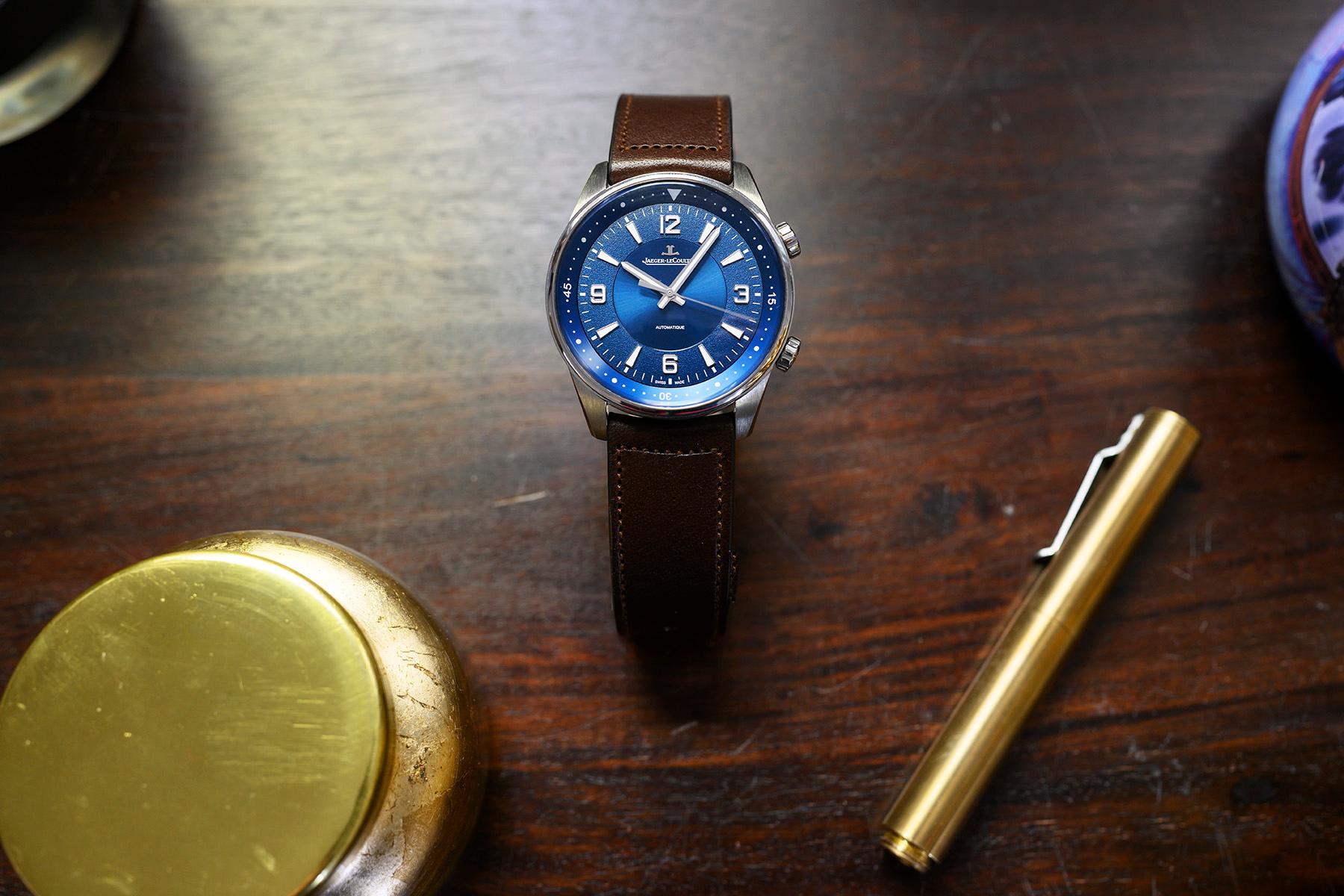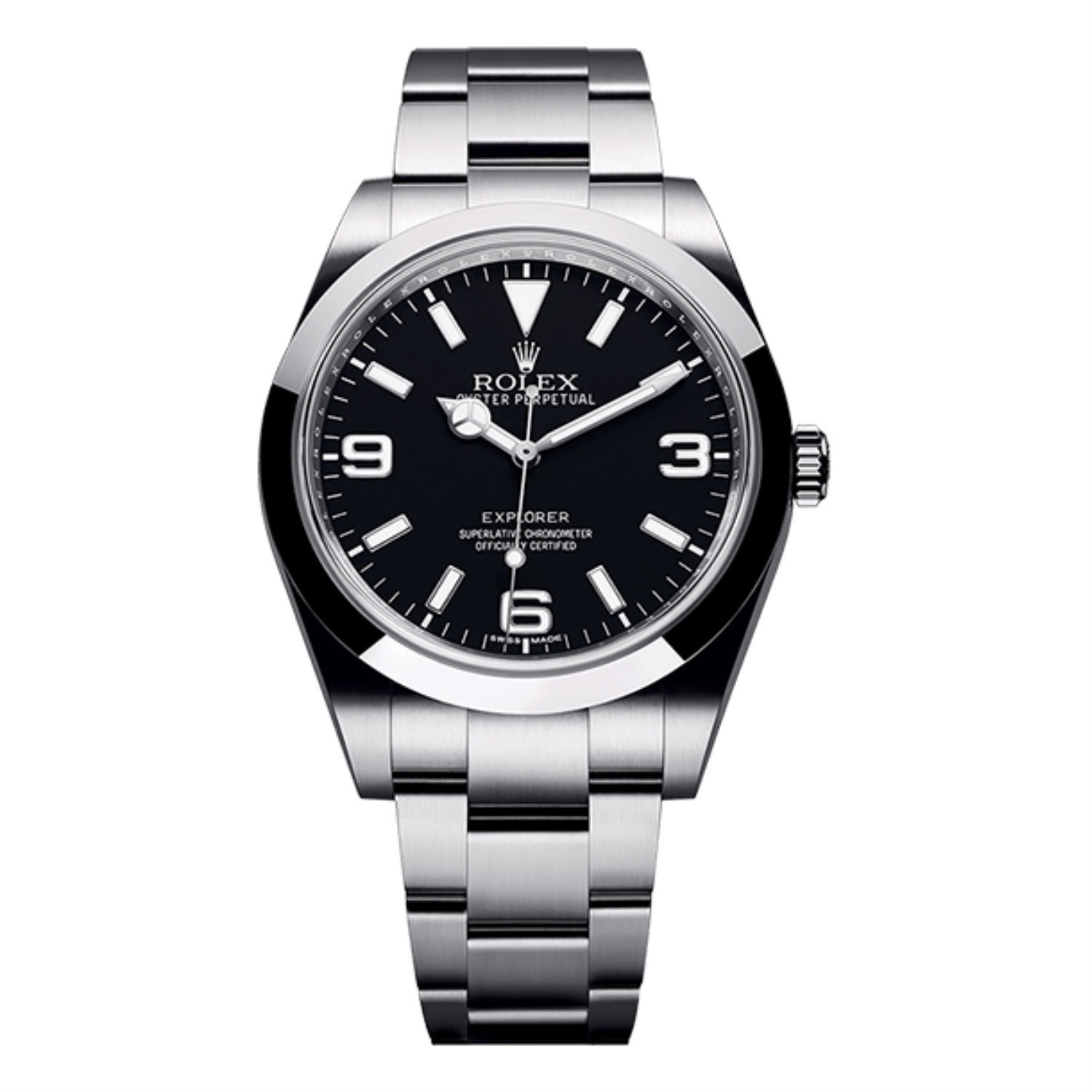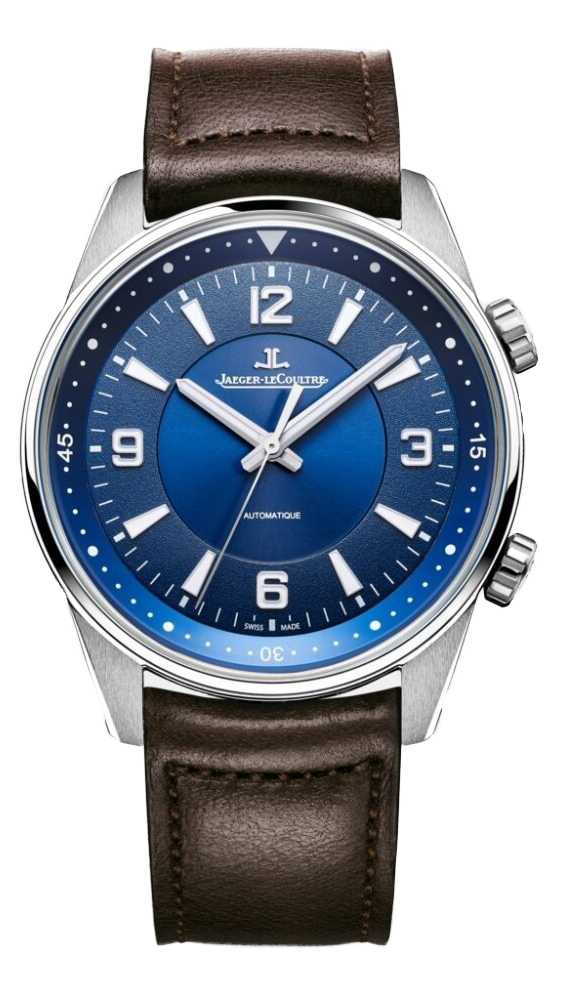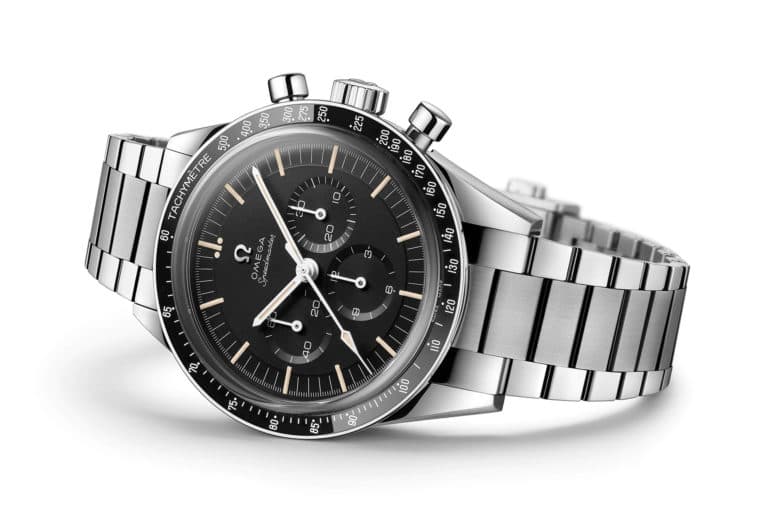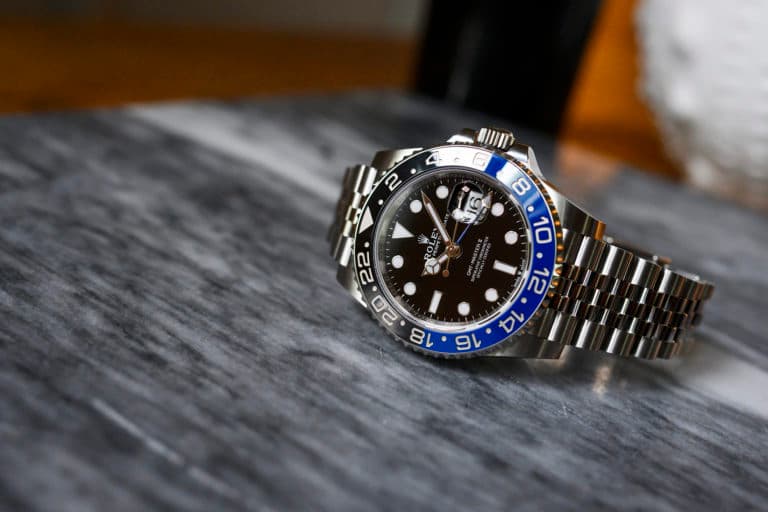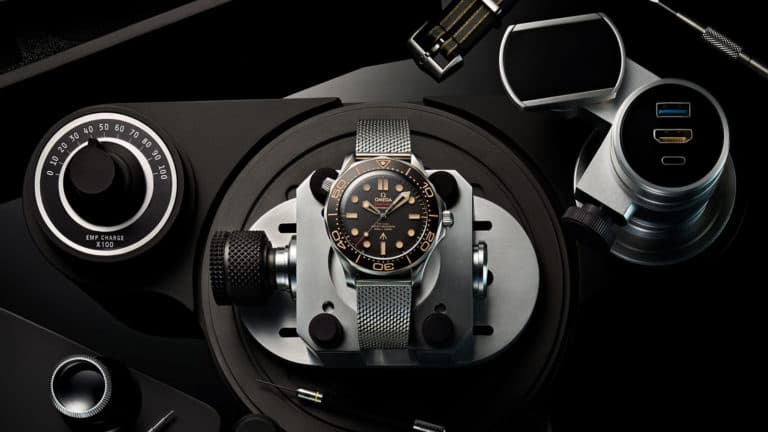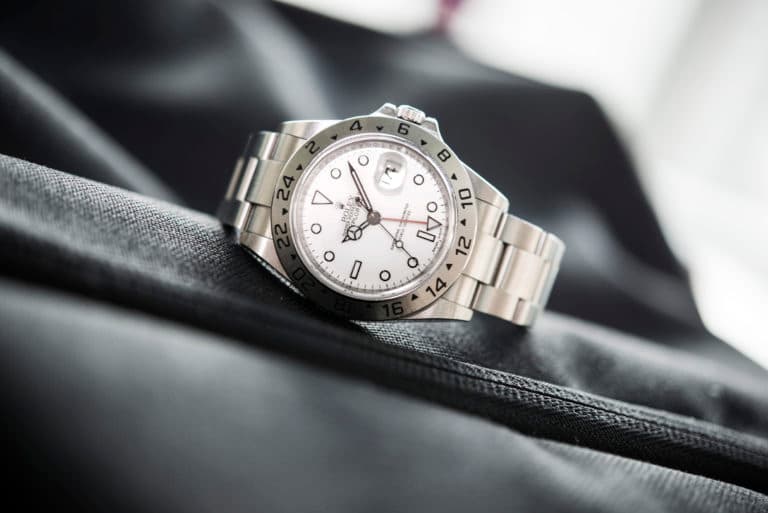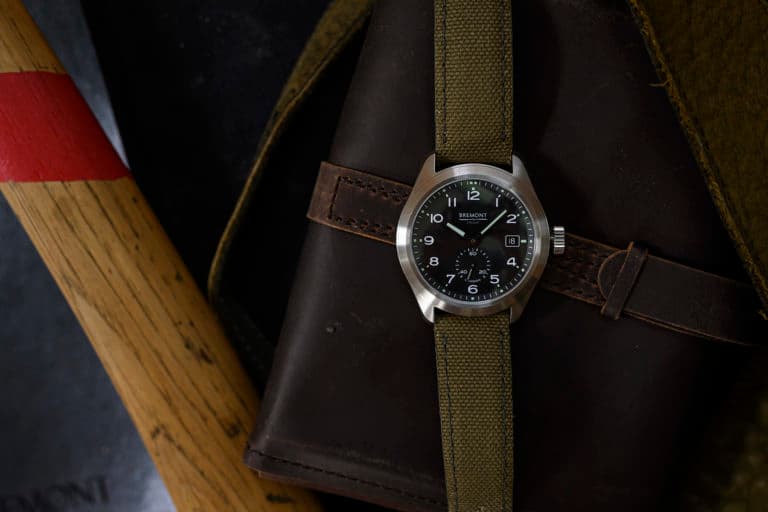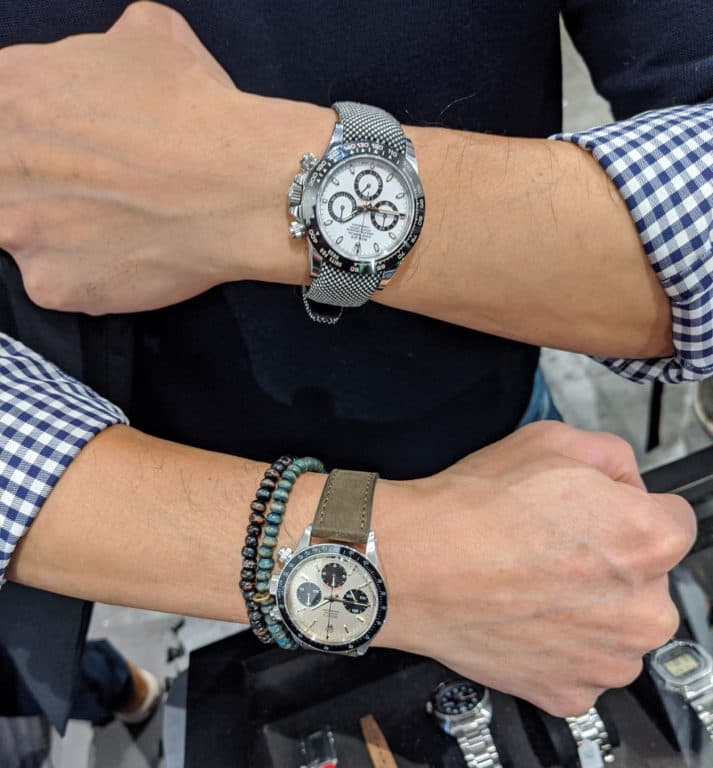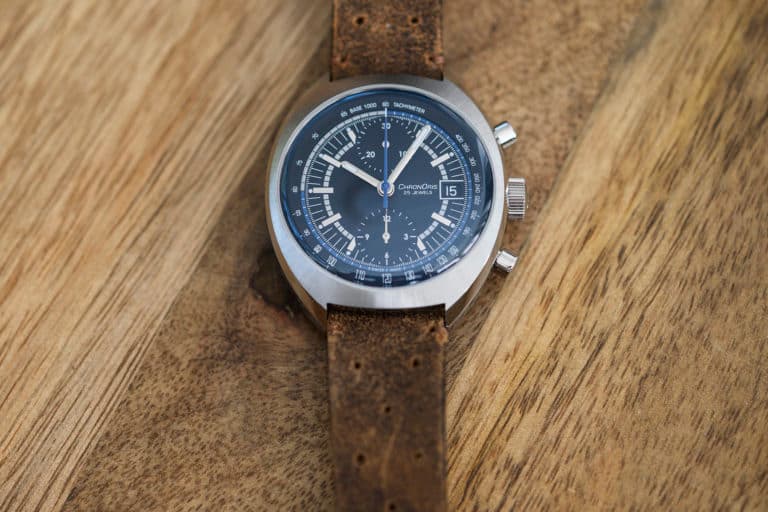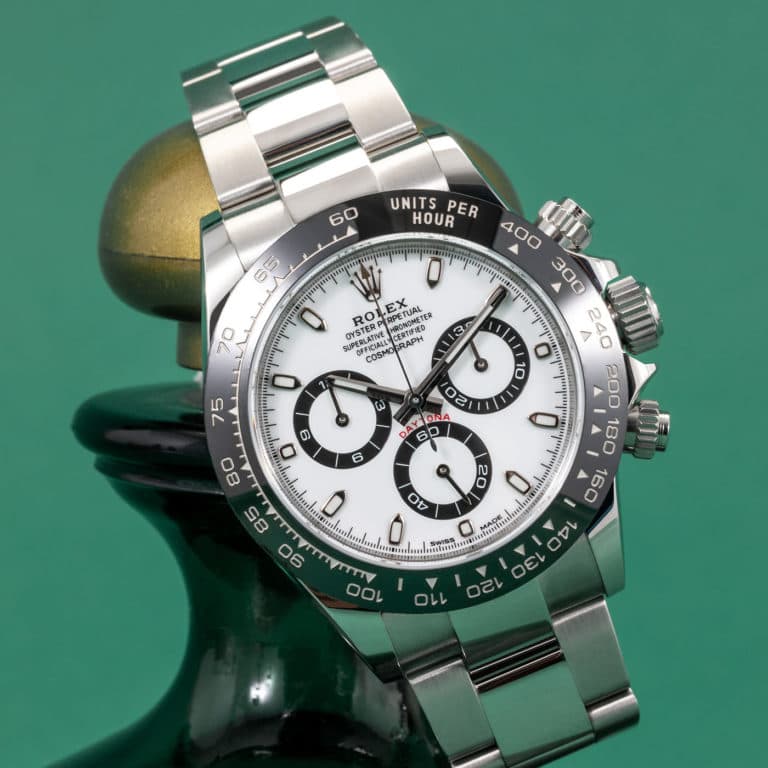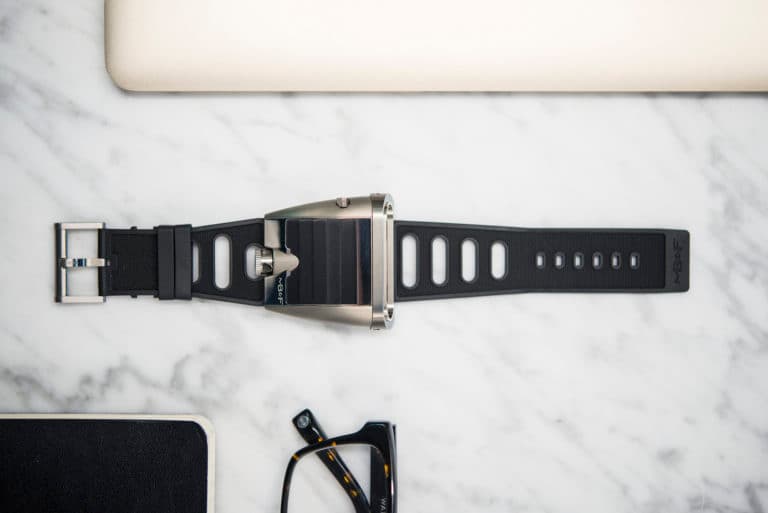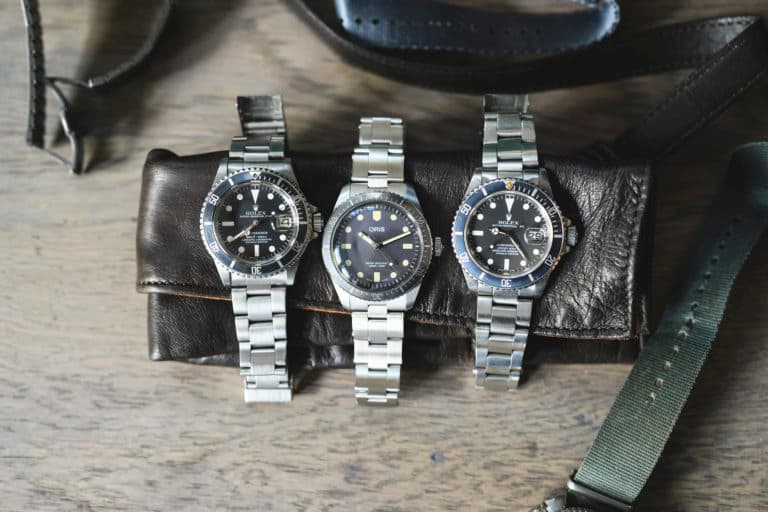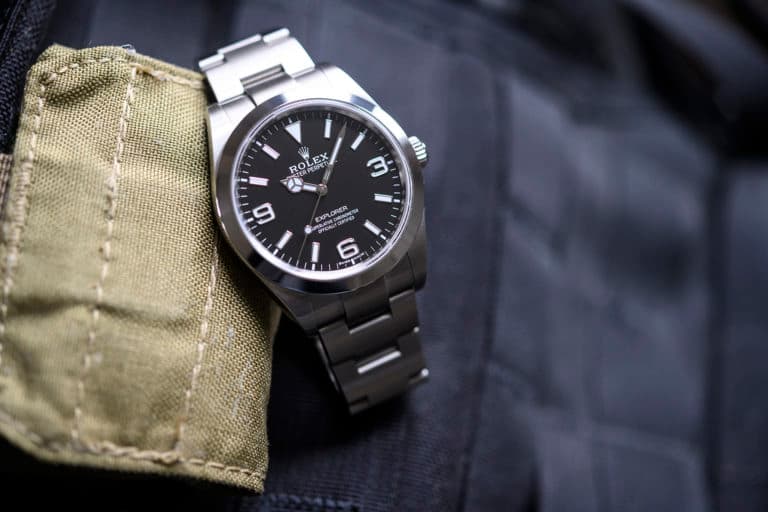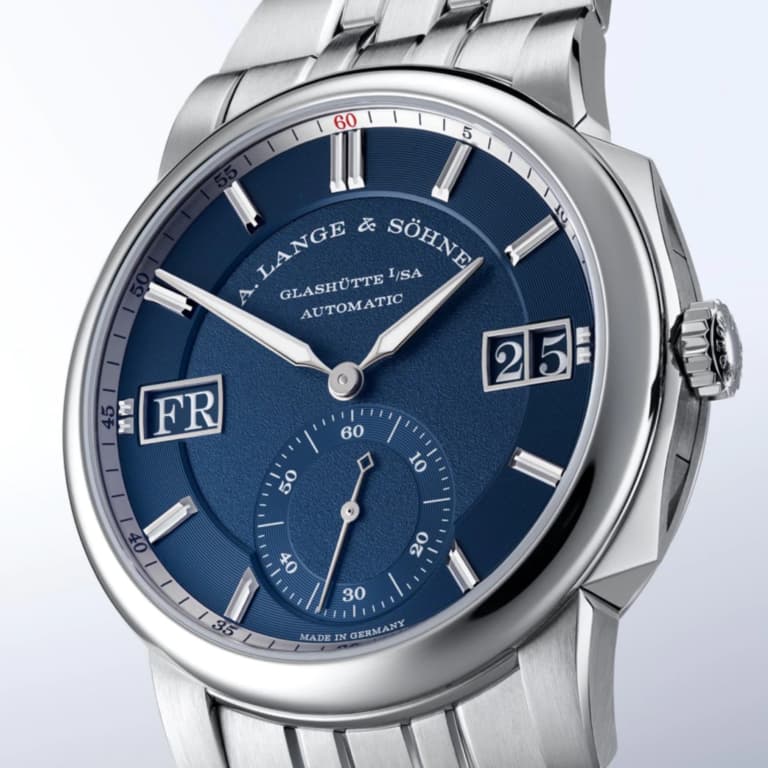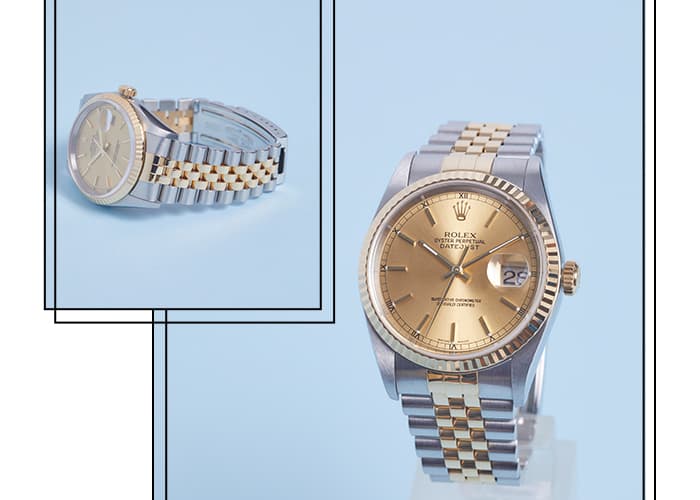Releasing a new watch into the market is a minefield these days. Consumers have more choices than ever before, and are armed with more information with which to make their purchase decisions. It’s not surprising, in this climate, to see brands lean into their back catalog for inspiration from well established design language, and take advantage of a little name recognition at the same time. When Jaeger-LeCoultre revived the Polaris name as a whole family of watches, they did just that. But the result isn’t quite as straightforward as you’d expect.
The Polaris name comes with a healthy amount of history attached to it, which would normally set expectations from the get go. However, JLC has gone beyond a simple re-issue here. The new Polaris family is an evolution of the original design language, presented in recognizable but modern guise across a breadth of complication serving as an entry-level sport watch collection for the historic manufacturer.
We got our hands on the new, base Polaris Automatic to see where JLC has taken the new line with an old name. There’s some big ambitions here and a market rife with competition, so this is a watch that’ll need more than just its name to establish some staying power.
About That Name
The name Polaris was first applied to the Memovox diver’s watch in 1968 which featured a mechanical alarm. The name did appear on prototypes, such as the uber-rare “Memodate” as early as 1963, but JLC recognizes 1968 as the official commercial introduction of the name. The unique function, which debuted on the Vulcain Cricket, was put to use as a dive feature in the Memovox, alarming divers with an audible ring underwater that their dive time has come to an end. Vulcain did something similar around the same time, and even added a decompression calculator onto the dial for good measure. The Polaris Memovox is a rare bird these days, with production ending with well under 2,000 examples being produced.

1968 Polaris Memovox
The design of the Polaris Memovox was also unique, and as it turns out, pretty timeless in many ways. The exterior utilized 3 crowns along the 3 o’clock side of the case, each serving a different purpose. The first to rotate the internal bezel, the second to adjust the time and wind the movement, and a third to set the alarm disc.
The dial utilized oversized hour markers made of lume, and Arabic numerals at the 6, 9, and 12 o’clock positions. Their weight and style wouldn’t raise an eyebrow were they released today, a sign of their utility and function driven design. All features prized in today’s competitive steel sport watch category. The original may not have stuck around long, but it’s a watch that’s always been received well by the collector community, and JLC is well aware.
The brand did a re-issue of the watch in 2008, marking the 40th anniversary of the original, and we say reissue, we mean right down to the acrylic crystal. The watch was released in limited quantities, 768 steel pieces and 165 in platinum, to be exact. In 2018, JLC again released an anniversary edition in celebration of 50 years of the watch, this time limited to 1,000 pieces. The big difference with the 50th anniversary is that it came along with a whole new Polaris family of watches, taking the name into a new, more modern direction.
The Polaris Collection

In 2018, Jaeger-LeCoultre arrived at SIHH with an entirely new collection of Polaris watches, consisting of 4 models (5 if you include the Memovox LE) in a variety of configurations. The collection occupies new space within the JLC family, with the goal of taking a portion of the booming luxury sport watch category. We’ve seen similar moves by myriad other brands in recent years, from Vacheron Constantin (in the similar looking Fifty-Six) to the most recent Alpine Eagle from Chopard.
The new Polaris line of watches includes the base, time-only Polaris Automatic, the Polaris Date, the Polaris Chronograph, and the Polaris Chronograph WT (World Timer). Case options range from steel to titanium and rose gold for the complicated variants, with leather, steel and rubber strap options available throughout. Dial options are limited to blue and black. Overall, a well rounded collection at first offering. Prices range from $6,700 to just under $14,300, with the pink gold Chronograph clocking in at $24,400, putting these watches in the midst of some stiff competition. To get acquainted with the family, we opted to spend some time with the most basic of them, the Polaris Automatic with blue dial and brown leather strap.
The Polaris Automatic
This is a simple watch at a glance, until it isn’t, that is. Sure, it tells the time, and not much else, and there’s nothing flashy begging for your attention here, but once you get past all that, there’s a lot of small details to discover. And that’s a good thing, because selling a time-only watch for $6,700 is no easy feat. So where’s the value? Let’s take a look.
The Polaris retains much of the design language of the original discussed above, which suits it well here. There is no faux lume here, which gives the dial a fresh modernity. Most throwback inspired watches that hit the market these days can’t resist the application of pre-yellowed lume, and it’s not always for the better. The large hour markers and numerals are clear and easy to read, just like the original, and they work exactly as well as you’d think.
The dial is broken into two sections, an inner section with a smooth texture, and an outer ring with a rough texture. The look evokes the inner disc of the original, which was used to set the alarm function. Here it helps to differentiate a read on the hours and minutes, which is needed, as the hour hand and the minute hand are a bit too close in length for comfort. Since they share the same shape and design, they make a quick read slightly more challenging than it needs to be.
At the outer edge of the dial you’ll find the internal bezel, which is manipulated via the crown at 2 o’clock. It’s a cool feature, and fits the aesthetic of the original, but the execution leaves a bit to be desired in the Polaris. First, the crown associated with the bezel is very sensitive, and is often unintentionally shifted under a cuff. The takeaway here is don’t rely on this bezel for any vital timing that you may find yourself in need of. Second, being internal, the dial is now the size as you’d find on a far larger watch. More on how these affect life on the wrist later.
The case of the Polaris is easily one of the strong points. It is brushed vertically across all surfaces, save for a chamfer down the edge of each lug. The lugs have a gentle slope that match the dome of the crystal to create form fitting aesthetic. The meeting point between the lugs and the case is defined by crease to accentuate the unique design of the lug.
Inside beats the Jaeger-LeCoultre caliber 898E/1, and this is perhaps the largest source of contention around the Polaris. The movement, which is a bit long in the tooth, is certainly more than adequate, however on paper it lacks behind some of the competition in areas like power reserve, which is a mere 38 hours. It’s also visibly undersized for this case, as is apparent thanks to the exhibition caseback. It is well decorated, and is subjected to JLC’s own rigorous testing procedures, so it should be good to put up with pretty much anything you’re likely to throw at it, and do it within COSC accuracy.
On The Wrist
The Polaris Automatic measures 41mm in diameter, 11mm in thickness, and a touch over 47mm from lug to lug thanks to the truncated lug design. This means the watch sits naturally on the wrist, if a little on the large side of normal. The internal bezel makes for an odd experience when it comes to the visual size on the wrist, however.
Most watches have an external bezel that takes up real estate on the dial side of the watch, creating a smaller area of the dial to live. For example, the bezel insert on a Rolex Submariner is 4mm wide, making the dial itself only 30mm in diameter. By contrast, the dial of the Polaris takes up nearly the entirety of the 41mm diameter of the case, giving the appearance of a far larger watch than is actually on your wrist. If you’re accustomed to wearing watches with large bezels, this will throw you off for a short time.
The lume on the dial performs well thanks to the large surface areas it occupies, and overall this is a very easy watch to live with everyday. If you plan on wearing this watch everyday, just make sure you go with the strap you like, or get a spare rubber strap in addition to the steel or leather strap. The short lugs mean the spring bars are tucked in very tight to the case. There is no popping the strap off, and slipping a NATO on for the weekend (even though it does have quick release tabs). This is a shame as the watch would look great on all manner of straps, so if you like to switch things out, again, get a rubber strap on top of the leather or steel. Thankfully, the leather strap that we tested is perfectly comfortable.
The only other curiosity that you’ll find in wear is that internal rotating bezel. The crown that adjusts it is very sensitive, and it can be altered without your knowing due to the regular movement of your arm, as we’ve mentioned above. This makes the feature borderline unusable in any practical fashion, which begs the question, does it really need to be there? Sure it’s a nice nod to the original, but the new Polaris line is meant to take the family into new territory, to be everyday usable and be a viable option against watches like the Rolex Explorer, and the execution of this feature leaves much to be desired.
Competition
The Polaris Automatic on brown leather strap has an MSRP of $6,700. Now, that’s a totally reasonable price for a full manufacture effort such as this. The Rolex Explorer 214270 for reference, has an MSRP of $6,550. Each have a rich heritage and well established, timeless design ethos, and each feature in-house movements. The Explorer is a bit more wearable, and its fit and finish are pretty much the standard bearer at this price point. That’s why this is a watch that sells for its MSRP or more in the pre-owned market. The same can not be said for the Polaris.
Sure, not everyone wants a Rolex, and the Polaris hits a decidedly different look and feel. The Polaris is a great watch in many regards, but at this price point, it’s impossible not to compare it to watches like the Explorer and feel the same amount of value. It’s just not there. And that’s less an indictment on the JLC as it is a compliment to the Rolex.
Another watch that should be on your radar in this price range is the Panerai Luminor Due, which is now offered in 38mm and 42mm case options. At the smaller size, the MSRP is $6,900, and it packs a lot of features into its brushed titanium case, such as a lovely blue sunburst dial, an in-house movement, and the ability to swap straps to your heart’s content. It too has some history behind it to call upon. We hope to get our hands on one of these for review soon so keep an eye on the blog for that.
Being such a hot segment at the moment, there are no shortage of great options when it comes to luxury sport watches. We’ve seen new watches like the Chopard Alpine Eagle and Bell & Ross BR05 join the likes of the Vacheron Constantin Overseas, the Girard Perregaux Laureato, the Bulgari Octo Finissimo, the Cartier Santos… did we mention this is a popular segment of watches? Each chasing the success of the Patek Philippe 5711 and Audemars Piguet Royal Oak (15202). In light of all these watches, the Polaris Automatic does indeed stand out as unique, much like the Explorer and the Santos. Each have history and can make a compelling case for your ~$7,000.
Final Thoughts
The Jaeger-LeCoultre Polaris collection sets a new tone for the brand, and does so in familiar packaging. The design shows promise, and sets in motion the evolution of their iconic Memovox watches. The execution is not perfect in an exceedingly competitive segment which demands it. The Polaris Automatic stands on its own merits however, offering a unique and historically relevant take on the steel sports watch. Its few faults aren’t enough to turn it away, and arguably add to its character as an entry level sport watch. The dial, the case, and even the movement, make this a fitting watch for any collection, and the rich built in history push the Polaris Automatic into largely unoccupied territory.
The Jaeger Le-Coultre Polaris Automatic is available on StockX right here. Shop the entire Polaris collection here.


